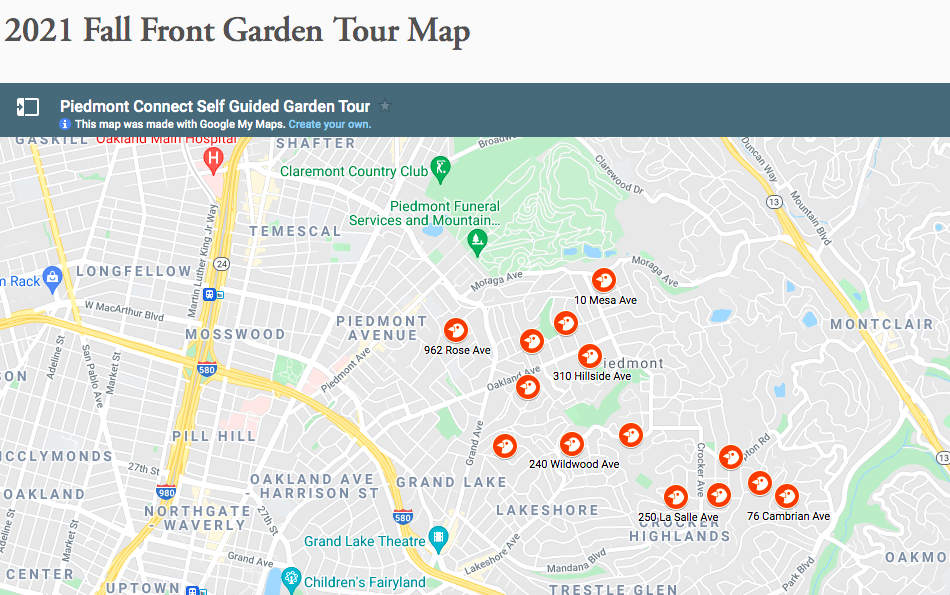Piedmont Connect’s Healthy Landscapes Fall Front Garden Tour begins Saturday, Sept. 25 and continues through Sunday, Oct. 3. During this period, Piedmonters can get sidewalk views of 14 selected front gardens featuring an array of drought-tolerant and native plant landscapes in neighborhoods throughout the city, from Baja to St. James Wood and from Moraga Avenue to Boulevard Way.
Check out www.piedmontconnect.org for a map of the street addresses, plus photos and complete descriptions of the front gardens explaining what, when, why, and how the gardens were transformed from lawns or ivy patches into healthier landscapes.
Additionally, join Piedmont Connect for two related events during the week of the garden tour:
On Wednesday, Sept. 29 at 10:30 a.m., join Dick Carter’s Wednesday Walkers group for a guided tour of some of the gardens on the Fall Front Garden Tour. A special guest from Piedmont Connect will discuss the significant features of the gardens on Dick’s customized walking route. Meet at the Piedmont Exedra to participate in this free Wednesday Walkers’ walking tour.
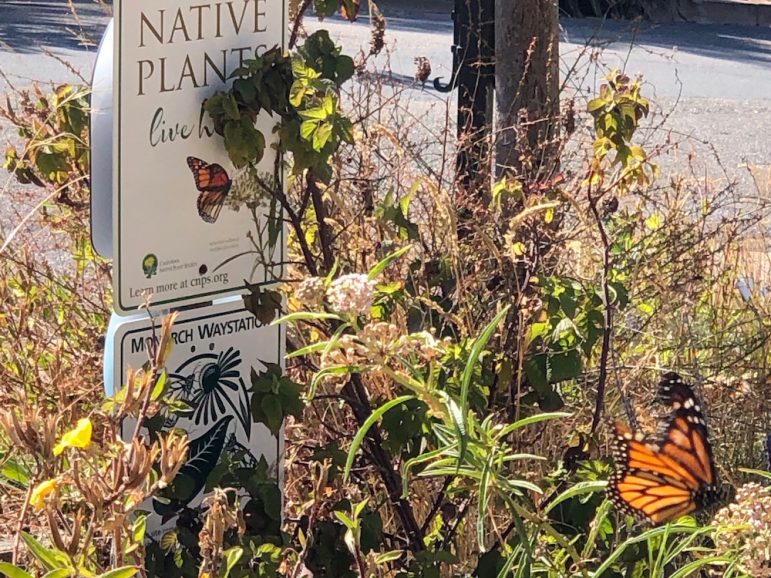
Piedmont’s certified Monarch Waystations are effective at attracting resident Monarch populations and supporting their long annual migration. 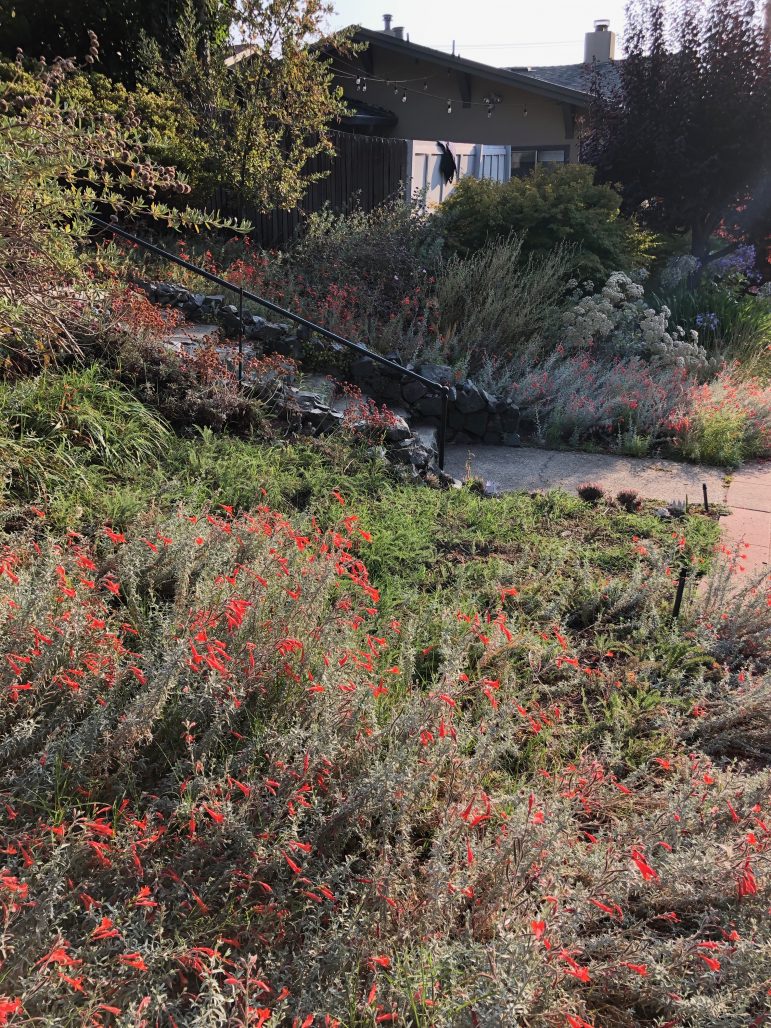
A mature wildlife garden provides the food, shelter, water and breeding spaces needed to support local food webs. 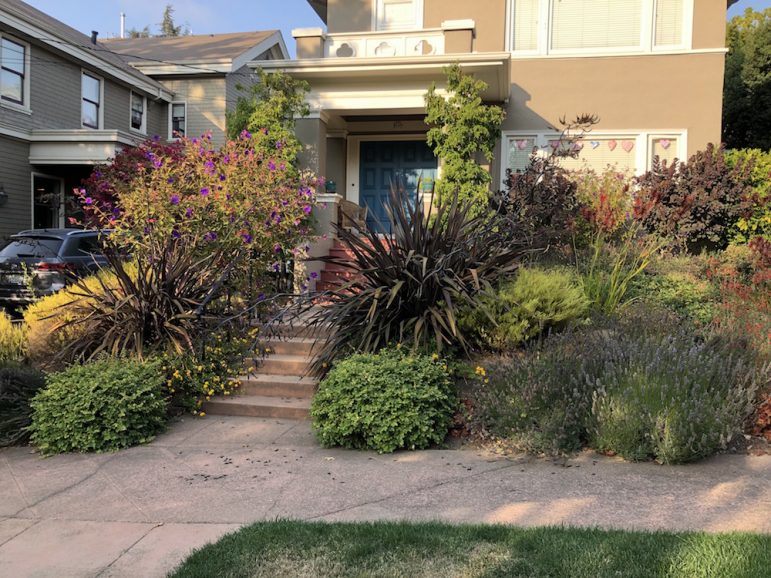
The eye lingers on the texture combinations of this colorful garden designed for succession blooming.
On Thursday, Sept. 30, from 7 to 8:15 p.m., Piedmont Connect, with City of Piedmont technical assistance, will host a Zoom event “Living With Drought.” Join the live webinar via the link at www.piedmontconnect.org.
“Living With Drought” will be moderated by dynamic Piedmont resident and water expert Eileen White, following an introduction by Piedmont Parks Manager Nancy Kent. Our Water Our World’s Suzanne Bontempo will give helpful outdoor water-saving techniques. For the finale, three Piedmont residents whose gardens are featured on the Fall Front Garden Tour will inspire viewers with their garden transformations, explaining how they use the latest research to sustain healthy ecosystems and maintain chemical-free, water-efficient oases that support a diversity of wildlife. There will be time for viewer questions and answers following the presentations.
For residents wanting to reduce water use, limit garden maintenance work, adapt to climate changes, build drought resiliency, and attract beneficial life to the garden, fall is the time of year when planting is recommended. Hoped-for (and likelier) winter rains help young or relocated plants to establish new root systems naturally, without supplemental water. Cooler temperatures also impede a few common plant pathogens to which some young plants are susceptible. Make the change to a healthier landscape now!
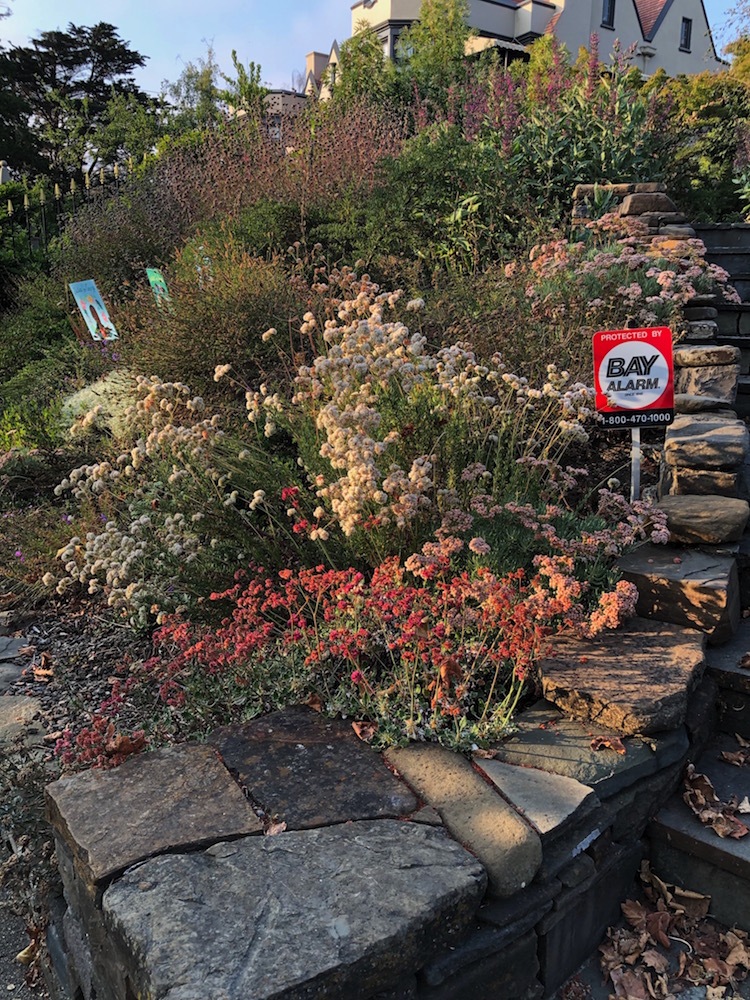
Native-dominant gardens, whose plant mass is at least 70% native, are needed to support a healthy and diverse biosphere. 
A breathtaking array of bunch grasses anchored by decorative boulders nestle into a bed of flowering Lippia. 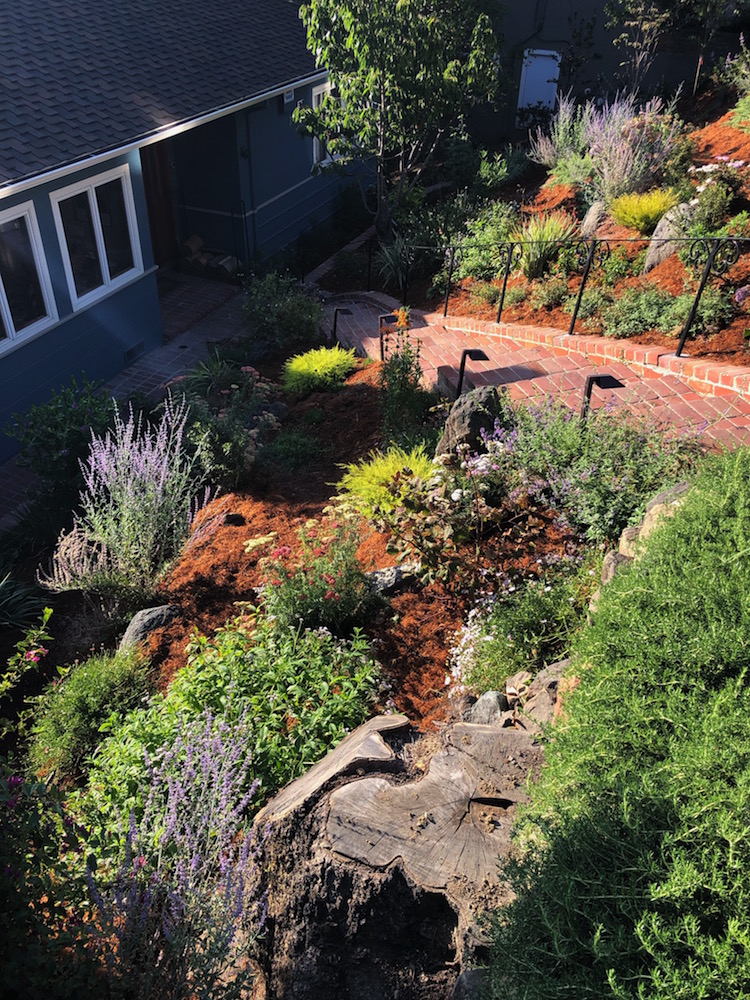
This hillside garden replaced an invasive ivy patch with a diverse, colorful, pollinator-beneficial design.
